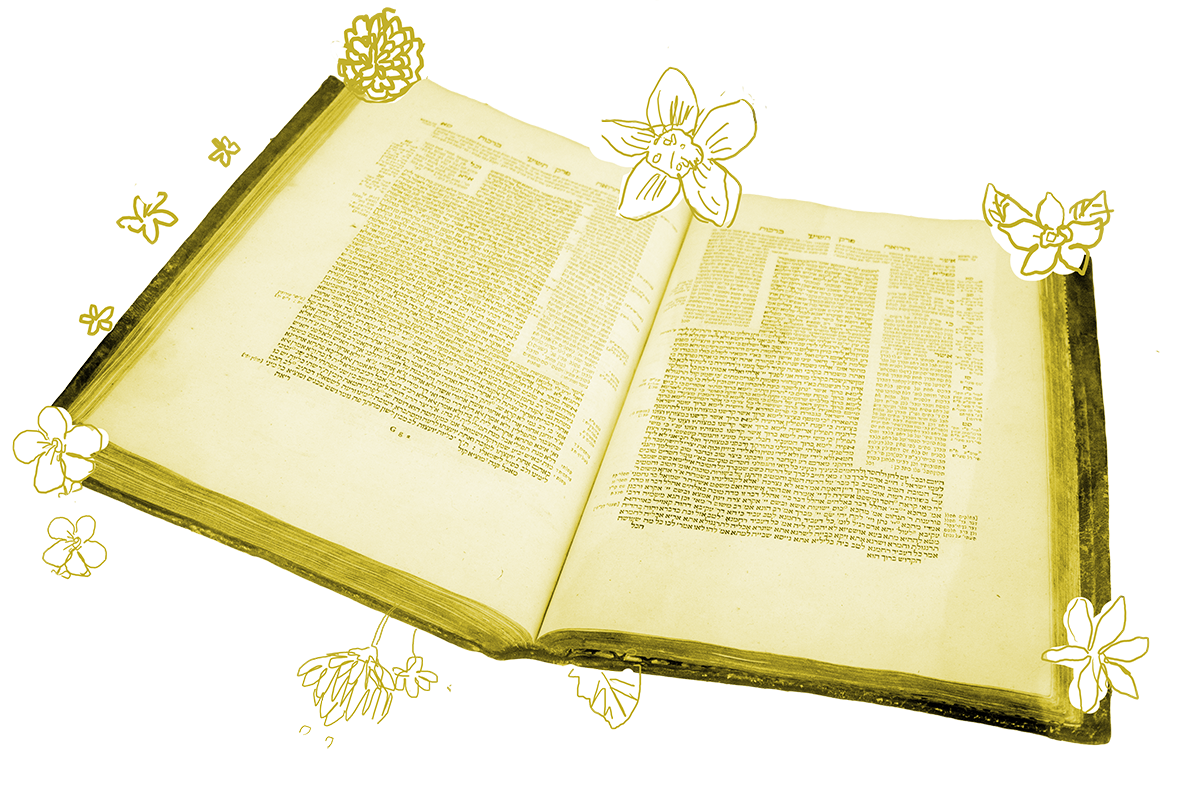For the last several days, and for more days to come, the Gemara has been involved with the specifics of the arba minim — the four species of plants that one takes up on Sukkot in order to fulfill the commandment set forth in Leviticus 23:40: And you shall take for yourselves on the first day (of the festival of Sukkot) the fruit of a beautiful tree, branches of a date palm and boughs of a dense-leaved tree and willows from the brook. The Talmud identifies the beautiful tree fruit as a citron (etrog) and the dense-leaved tree as myrtle, completing the classic four species still used today.
The Torah simply tells us to “take” the four species, but in fact we have a custom of binding them together. It is apparent that the rabbis of the Talmud already had this same practice: weaving strips of palm into a special holder for all three branches. How did this practice come about? The Gemara finds an answer:
And the reason that there is a mitzvah to bind them is due to the fact that it is stated: This is my God and I will glorify him (ve’anvehu) (Exodus 15:2), which they interpreted to mean: Beautify yourself (hitna’e) before him in the performance of the mitzvot.
This midrash hinges on the fact that the word used for “glorify” in Exodus, when conjugated in the reflexive form, means “beautify.” The rabbis agree that binding is not necessary, but the mitzvah is more beautiful when the lulav is bound with a custom woven holder.
With your help, My Jewish Learning can provide endless opportunities for learning, connection and discovery.
The concept of hiddur mitzvah — beautifying ritual objects — is found throughout the Talmud and other rabbinic commentaries. In fact, the word hiddur shares a root with the fruit in our verse from Leviticus, which in Hebrew is called pri etz hadar: “the fruit of a beautiful tree” (namely, the etrog).
In the Mekhilta, a collection of midrashim of the same era as the Mishnah, Rabbi Yishmael muses about Exodus 15:2, quoted above: “Is it possible for a human being to add glory to his Creator? What this really means is: I shall glorify him in the way I perform mitzvot. I shall prepare before him a beautiful lulav, beautiful sukkah, beautiful tzitzit and beautiful tefillin.”
So while we could take up the palm, myrtle and willow branch in our fist like a bunch of vegetables from the market, lovingly weaving them together is so much more beautiful. By the time of the Shulchan Aruch, the definitive medieval Jewish law code, bundling these items together had achieved the status of halakhah.
While the rabbis read Exodus to show that the rationale for hiddur mitzvah is glorifying God, these discussions also point to the importance of beautifying the ritual objects we use to fulfill mitzvot for our own benefit. Beautiful Judaica, after all, makes us want to use it. And wanting to do mitzvot — not just being required, but really desiring to do them — may indeed be the most beautiful way to fulfill the verse: This is my God and I will glorify him.
Read all of Sukkah 33 on Sefaria.
This piece originally appeared in a My Jewish Learning Daf Yomi email newsletter sent on August 9th, 2021. If you are interested in receiving the newsletter, sign up here.



